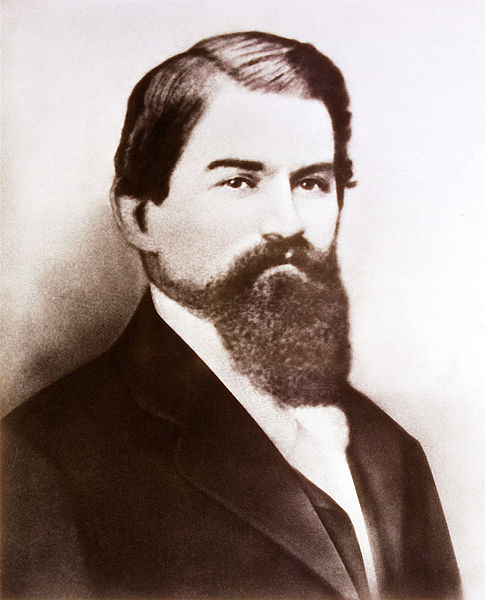|
Cola Nut
The term kola nut usually refers to the seeds of certain species of plant of the genus ''Cola'', placed formerly in the cocoa family Sterculiaceae and now usually subsumed in the mallow family Malvaceae (as subfamily Sterculioideae). These cola species are trees native to the tropical rainforests of Africa. Their caffeine-containing seeds are used as flavoring ingredients in beverages applied to various carbonated soft drinks, from which the name ''cola'' originates. General description The kola nut is a caffeine-containing nut of evergreen trees of the genus ''Cola'', primarily of the species ''Cola acuminata'' and ''Cola nitida''. ''Cola acuminata'', an evergreen tree about 20 meters in height, has long, ovoid leaves pointed at both the ends with a leathery texture. The trees have cream flowers with purplish-brown striations, and star-shaped fruit consisting of usually 5 follicles. Inside each follicle, about a dozen prismatic seeds develop in a white seed-shell. The nut†... [...More Info...] [...Related Items...] OR: [Wikipedia] [Google] [Baidu] |
Follicle (fruit)
In botany, a follicle is a dry unilocular fruit formed from one carpel, containing two or more seeds. It is usually defined as dehiscing by a suture in order to release seeds, for example in ''Consolida'' (some of the larkspurs), peony and milkweed (''Asclepias''). Some difficult cases exist however, so that the term indehiscent follicle is sometimes used, for example with the genus ''Filipendula'', which has indehiscent fruits that could be considered intermediate between a (dehiscent) follicle and an (indehiscent) achene. An aggregate fruit that consists of follicles may be called a follicetum. Examples include hellebore, aconite, ''Delphinium'', ''Aquilegia'' or the family Crassulaceae, where several follicles occur in a whorl on a shortened receptacle, or ''Magnolia'', which has many follicles arranged in a spiral on an elongated receptacle. The follicles of some species dehisce by the ventral suture (as in ''Banksia''), or by the dorsal suture (as in ''Magnolia'').Kapil, R. ... [...More Info...] [...Related Items...] OR: [Wikipedia] [Google] [Baidu] |
Coffea
''Coffea'' is a genus of flowering plants in the Family (biology), family Rubiaceae. ''Coffea'' species are shrubs or small trees native to tropical and southern Africa and tropical Asia. The seeds of some species, called coffee beans, are used to flavor various beverages and products. The fruits, like the seeds, contain a large amount of caffeine, and have a distinct sweet taste and are often juiced. The plant ranks as one of the world's most valuable and widely traded commodity crops and is an important export product of several countries, including those in Central and South America, the Caribbean and Africa. Cultivation and use There are over 120 species of ''Coffea'', which is grown from seed. The two most popular are ''Coffea arabica'' (commonly known simply as "Arabica"), which accounts for 60–80% of the world's coffee production, and ''Coffea canephora'' (known as "Robusta coffee, Robusta"), which accounts for about 20–40%. '' C. arabica'' is preferred for its s ... [...More Info...] [...Related Items...] OR: [Wikipedia] [Google] [Baidu] |
Coca-Cola
Coca-Cola, or Coke, is a carbonated soft drink manufactured by the Coca-Cola Company. Originally marketed as a temperance drink and intended as a patent medicine, it was invented in the late 19th century by John Stith Pemberton in Atlanta, Georgia. In 1888, Pemberton sold Coca-Cola's ownership rights to Asa Griggs Candler, a businessman, whose marketing tactics led Coca-Cola to its dominance of the global soft-drink market throughout the 20th and 21st century. The drink's name refers to two of its original ingredients: coca leaves and kola nuts (a source of caffeine). The current formula of Coca-Cola remains a closely guarded trade secret; however, a variety of reported recipes and experimental recreations have been published. The secrecy around the formula has been used by Coca-Cola in its marketing as only a handful of anonymous employees know the formula. The drink has inspired imitators and created a whole classification of soft drink: colas. The Coca-Cola Company p ... [...More Info...] [...Related Items...] OR: [Wikipedia] [Google] [Baidu] |
Cola
Cola is a carbonated soft drink flavored with vanilla, cinnamon, citrus oils and other flavorings. Cola became popular worldwide after the American pharmacist John Stith Pemberton invented Coca-Cola, a trademarked brand, in 1886, which was imitated by other manufacturers. Most colas contain caffeine originally from the kola nut, leading to the drink's name, though other sources have since been used. The Pemberton cola drink also contained a coca plant extract. His non-alcoholic recipe was inspired by the coca wine of pharmacist Angelo Mariani, created in 1863. Most modern colas have a dark caramel color, and are sweetened with sugar and/or high-fructose corn syrup. They come in numerous different brands. with Coca-Cola and Pepsi being among the most popular. These two companies have been competing since the 1890s, a rivalry that has intensified since the 1980s. Flavorings The primary modern flavorings in a cola drink are citrus oils (from orange, lime, and lemon peels), ... [...More Info...] [...Related Items...] OR: [Wikipedia] [Google] [Baidu] |
Western Culture
Leonardo da Vinci's ''Vitruvian Man''. Based on the correlations of ideal Body proportions">human proportions with geometry described by the ancient Roman architect Vitruvius in Book III of his treatise ''De architectura''. image:Plato Pio-Clemetino Inv305.jpg, upPlato, arguably the most influential figure in all of Western philosophy and has influenced virtually all of subsequent Western and Middle Eastern philosophy and theology. Western culture, also known as Western civilization, Occidental culture, or Western society, is the Cultural heritage, heritage of social norms, ethical values, traditional customs, belief systems, political systems, artifacts and technologies of the Western world. The term applies beyond Europe to countries and cultures whose histories are strongly connected to Europe by immigration, colonization or influence. Western culture is most strongly influenced by Greco-Roman culture, Germanic culture, and Christian culture. The expansion of Greek cul ... [...More Info...] [...Related Items...] OR: [Wikipedia] [Google] [Baidu] |
Cough
A cough is a sudden expulsion of air through the large breathing passages that can help clear them of fluids, irritants, foreign particles and microbes. As a protective reflex, coughing can be repetitive with the cough reflex following three phases: an inhalation, a forced exhalation against a closed glottis, and a violent release of air from the lungs following opening of the glottis, usually accompanied by a distinctive sound. Frequent coughing usually indicates the presence of a disease. Many viruses and bacteria benefit, from an evolutionary perspective, by causing the host to cough, which helps to spread the disease to new hosts. Most of the time, irregular coughing is caused by a respiratory tract infection but can also be triggered by choking, smoking, air pollution, asthma, gastroesophageal reflux disease, post-nasal drip, chronic bronchitis, lung tumors, heart failure and medications such as angiotensin-converting-enzyme inhibitors (ACE inhibitors). Treatment should t ... [...More Info...] [...Related Items...] OR: [Wikipedia] [Google] [Baidu] |
Human Digestive System
The human digestive system consists of the gastrointestinal tract plus the accessory organs of digestion (the tongue, salivary glands, pancreas, liver, and gallbladder). Digestion involves the breakdown of food into smaller and smaller components, until they can be absorbed and assimilated into the body. The process of digestion has three stages: the cephalic phase, the gastric phase, and the intestinal phase. The first stage, the cephalic phase of digestion, begins with secretions from gastric glands in response to the sight and smell of food. This stage includes the mechanical breakdown of food by chewing, and the chemical breakdown by digestive enzymes, that takes place in the mouth. Saliva contains the digestive enzymes amylase, and lingual lipase, secreted by the salivary and serous glands on the tongue. Chewing, in which the food is mixed with saliva, begins the mechanical process of digestion. This produces a bolus which is swallowed down the esophagus to enter the st ... [...More Info...] [...Related Items...] OR: [Wikipedia] [Google] [Baidu] |
Traditional Medicine
Traditional medicine (also known as indigenous medicine or folk medicine) comprises medical aspects of traditional knowledge that developed over generations within the folk beliefs of various societies, including indigenous peoples, before the era of modern medicine. The World Health Organization (WHO) defines traditional medicine as "the sum total of the knowledge, skills, and practices based on the theories, beliefs, and experiences indigenous to different cultures, whether explicable or not, used in the maintenance of health as well as in the prevention, diagnosis, improvement or treatment of physical and mental illness". Traditional medicine is often contrasted with scientific medicine. In some Asian and African countries, up to 80% of the population relies on traditional medicine for their primary health care needs. When adopted outside its traditional culture, traditional medicine is often considered a form of alternative medicine. Practices known as traditional medicines ... [...More Info...] [...Related Items...] OR: [Wikipedia] [Google] [Baidu] |
West African
West Africa or Western Africa is the westernmost region of Africa. The United Nations defines Western Africa as the 16 countries of Benin, Burkina Faso, Cape Verde, The Gambia, Ghana, Guinea, Guinea-Bissau, Ivory Coast, Liberia, Mali, Mauritania, Niger, Nigeria, Senegal, Sierra Leone, and Togo, as well as Saint Helena, Ascension and Tristan da Cunha ( United Kingdom Overseas Territory).Paul R. Masson, Catherine Anne Pattillo, "Monetary union in West Africa (ECOWAS): is it desirable and how could it be achieved?" (Introduction). International Monetary Fund, 2001. The population of West Africa is estimated at about million people as of , and at 381,981,000 as of 2017, of which 189,672,000 are female and 192,309,000 male. The region is demographically and economically one of the fastest growing on the African continent. Early history in West Africa included a number of prominent regional powers that dominated different parts of both the coastal and internal trade networks, ... [...More Info...] [...Related Items...] OR: [Wikipedia] [Google] [Baidu] |
Flavonoid
Flavonoids (or bioflavonoids; from the Latin word ''flavus'', meaning yellow, their color in nature) are a class of polyphenolic secondary metabolites found in plants, and thus commonly consumed in the diets of humans. Chemically, flavonoids have the general structure of a 15-carbon skeleton, which consists of two phenyl rings (A and B) and a heterocyclic ring (C, the ring containing the embedded oxygen). This carbon structure can be abbreviated C6-C3-C6. According to the IUPAC nomenclature, they can be classified into: *flavonoids or bioflavonoids *isoflavonoids, derived from 3-phenyl chromen-4-one (3-phenyl-1,4-benzopyrone) structure *neoflavonoids, derived from 4-phenylcoumarine (4-phenyl-1,2-benzopyrone) structure The three flavonoid classes above are all ketone-containing compounds and as such, anthoxanthins ( flavones and flavonols). This class was the first to be termed bioflavonoids. The terms flavonoid and bioflavonoid have also been more loosely used to describe non ... [...More Info...] [...Related Items...] OR: [Wikipedia] [Google] [Baidu] |
Saponin
Saponins (Latin "sapon", soap + "-in", one of), also selectively referred to as triterpene glycosides, are bitter-tasting usually toxic plant-derived organic chemicals that have a foamy quality when agitated in water. They are widely distributed but found particularly in soapwort (genus Saponaria), a flowering plant, the soapbark tree (''Quillaja saponaria'') and soybeans (''Glycine max'' L.). They are used in soaps, medicinals, fire extinguishers, speciously as dietary supplements, for synthesis of steroids, and in carbonated beverages (the head on a mug of root beer). Structurally, they are glycosides, sugars bonded to another organic molecule, usually a steroid or triterpene, a steroid building block. Saponins are both water and fat soluble, which gives them their useful soap properties. Some examples of these chemicals are glycyrrhizin, licorice flavoring; and quillaia (alt. quillaja), a bark extract used in beverages. Uses The saponins are a subclass of terpenoids, the larges ... [...More Info...] [...Related Items...] OR: [Wikipedia] [Google] [Baidu] |








